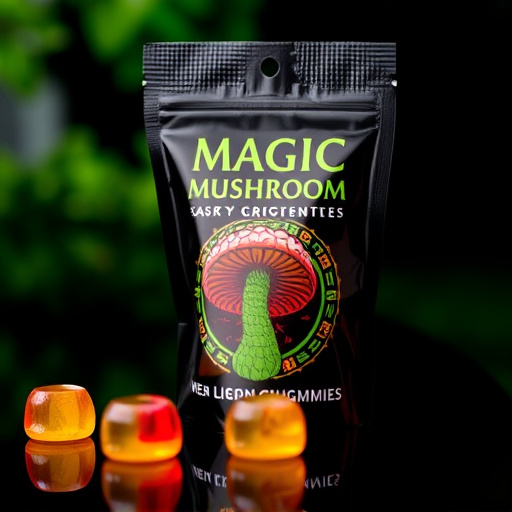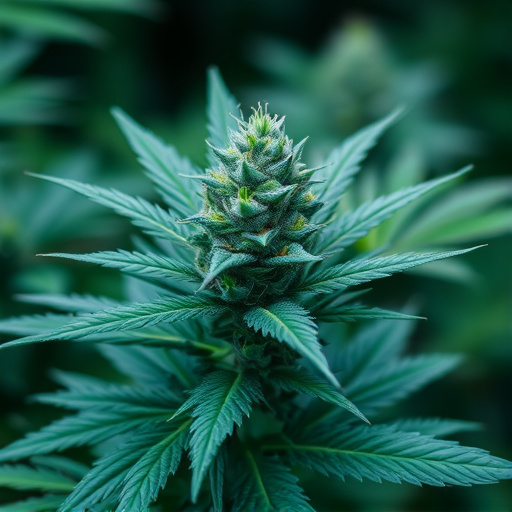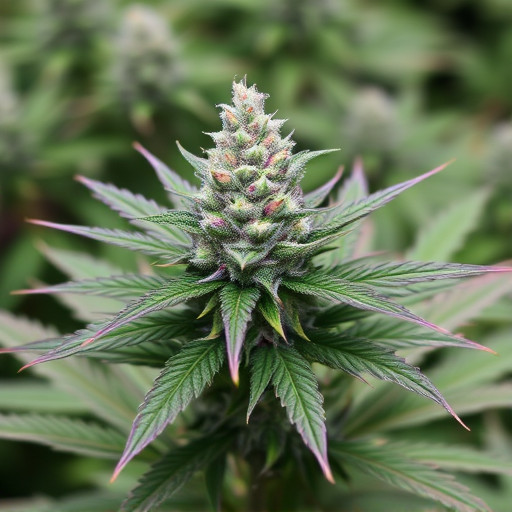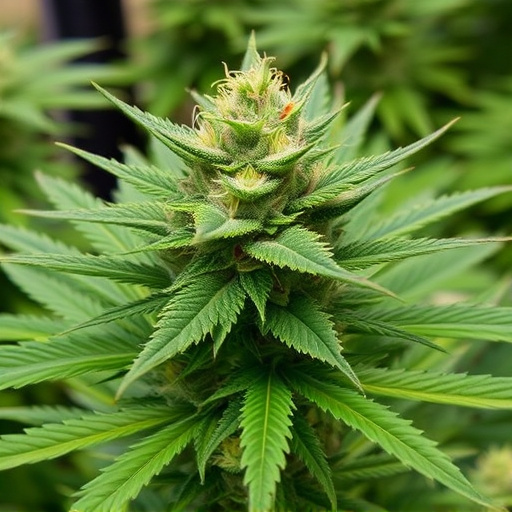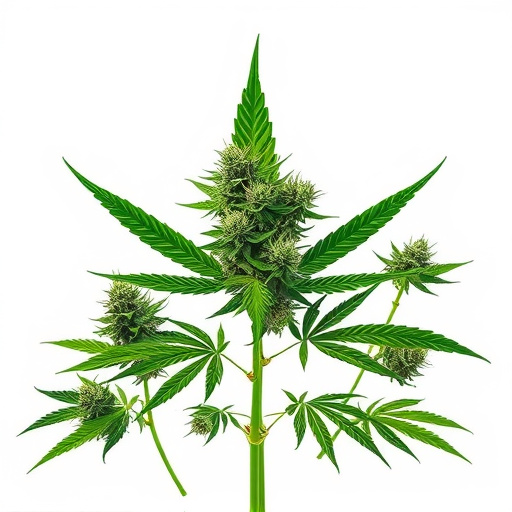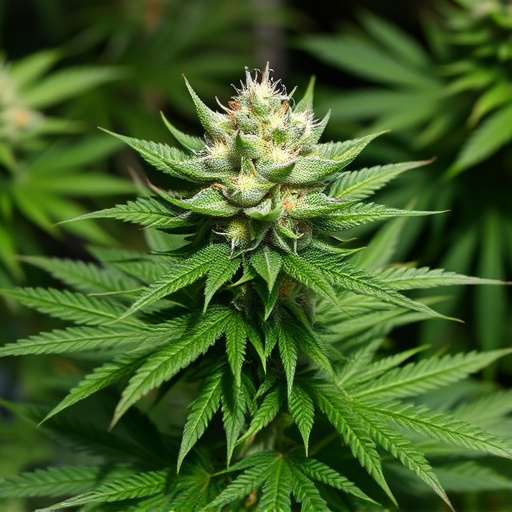Cannabidiol (CBD), a non-intoxicating compound in cannabis sativa strains, interacts with the body's endocannabinoid system to regulate homeostasis and offer diverse therapeutic benefits. Research suggests CBD reduces inflammation, modulates neurotransmitters, and alleviates conditions like chronic pain, anxiety, and sleep issues without the "high" associated with THC. CBD-dominant strains, characterized by high CBD and low THC levels, are gaining popularity for their soothing effects and potential to enhance overall well-being compared to traditional cannabis sativa strains with higher THC content.
Cannabis sativa strains have gained immense popularity for their CBD-dominant profiles, offering a range of potential health benefits without the psychoactive effects of THC. This article delves into the science behind these strains, exploring the unique properties of cannabidiol (CBD) and its interaction with the body’s endocannabinoid system. By understanding the role of cannabinoids within cannabis sativa strains, readers can unlock the therapeutic advantages of CBD-rich varieties for various well-being goals.
- Understanding CBD and Its Unique Properties
- The Role of Cannabinoids in Cannabis Sativa Strains
- Unlocking the Benefits: How CBD-Dominant Strains Interact with the Body
Understanding CBD and Its Unique Properties
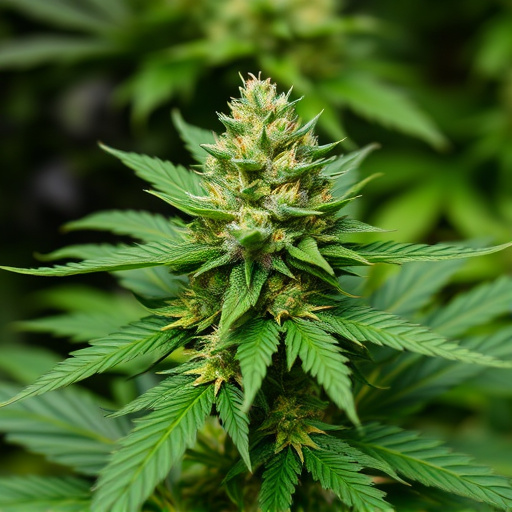
Cannabidiol (CBD) is a non-intoxicating compound found in cannabis sativa strains, known for its diverse therapeutic properties. Unlike tetrahydrocannabinol (THC), CBD doesn’t produce feelings of euphoria or alter consciousness, making it a popular choice for those seeking the benefits of cannabis without the high. Its unique mechanism of action involves interacting with the endocannabinoid system, a complex signaling network within the body that plays a crucial role in maintaining homeostasis — the internal balance necessary for optimal health.
CBD’s versatility is attributed to its ability to modulate various receptors and enzymes involved in physiological processes, including pain perception, inflammation, mood regulation, and nerve function. This interaction allows CBD to offer potential therapeutic benefits for a wide range of conditions, from chronic pain and anxiety to epilepsy and acne. As research into CBD continues to evolve, understanding these properties is essential for appreciating the full potential of cannabis sativa strains in promoting overall well-being.
The Role of Cannabinoids in Cannabis Sativa Strains
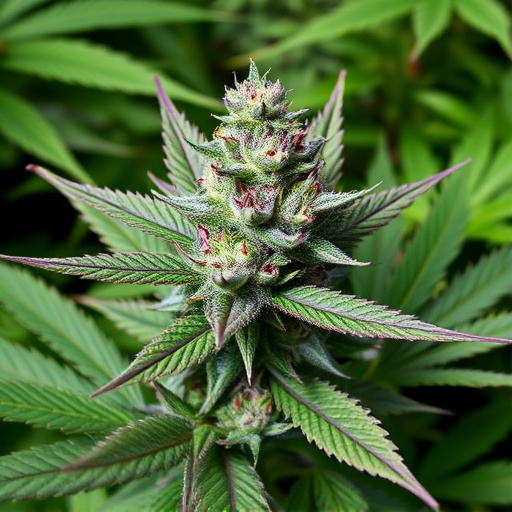
Cannabis sativa strains owe their unique properties and effects primarily to the complex interplay of cannabinoids present in the plant. Cannabinoids are chemical compounds that interact with our body’s endocannabinoid system (ECS), playing a crucial role in regulating various physiological processes, including mood, memory, appetite, and pain perception. Among these, cannabidiol (CBD) has garnered significant attention due to its potential therapeutic benefits without inducing psychoactive effects, distinct from tetrahydrocannabinol (THC).
In CBD-dominant strains of cannabis sativa, the concentration of CBD is significantly higher than that of THC. This imbalance alters the plant’s overall effect, promoting a more soothing and calming experience. Research suggests that CBD interacts with specific receptors in the ECS, modulating neurotransmitter release and reducing inflammation, which may contribute to its anxiolytic and anti-inflammatory properties. As a result, consumers often turn to these strains for their potential to alleviate stress, anxiety, and pain without the mental alteration associated with THC-rich varieties.
Unlocking the Benefits: How CBD-Dominant Strains Interact with the Body
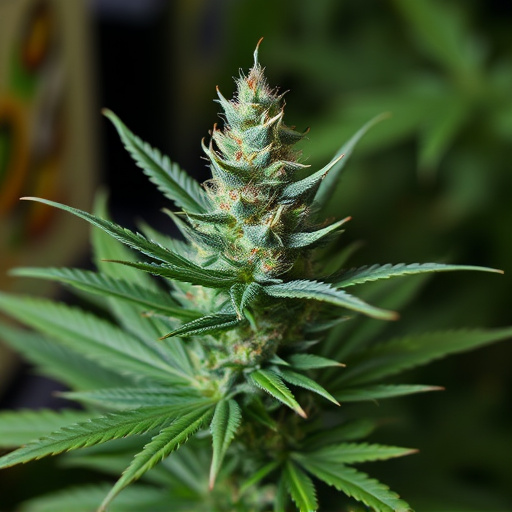
CBD-dominant strains of cannabis offer a unique experience compared to their THC-rich counterparts. The key lies in the interaction between CBD and the body’s endocannabinoid system (ECS). The ECS acts as a sophisticated communication network, regulating various physiological processes including mood, memory, pain sensation, and inflammation.
When consumed, CBD binds to specific receptors within the ECS, modulating their activity and triggering a cascade of beneficial effects. Unlike THC, CBD does not induce psychoactive sensations but instead promotes homeostasis, supporting overall well-being. This interaction explains why CBD-dominant strains are increasingly sought after for their potential therapeutic benefits, particularly in managing pain, reducing anxiety, and promoting restful sleep without the mental alterations associated with high-THC cannabis sativa strains.
CBD-dominant strains of cannabis sativa offer a unique opportunity to harness the therapeutic benefits of cannabidiol without the psychotropic effects of THC. By understanding the interplay between CBD and the body’s endocannabinoid system, we can unlock a range of potential health benefits. These strains represent a promising direction in the world of cannabis, providing natural relief and improved well-being without the complexities associated with traditional cannabinoids.
